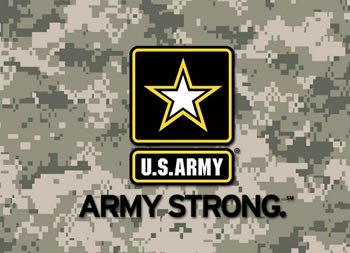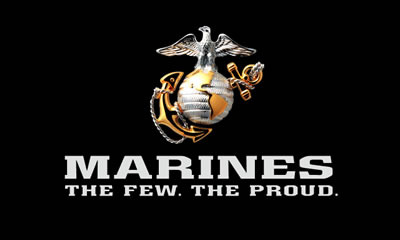Difference between US Army and US Marines
Key Difference: The US Army and the US Marines are two different segments of the United States Armed Forces. The US Army is responsible for all land-based military operations. The Marines are a highly mobile amphibious attack force. Marines are known to be mobile, lightweight, and very rapid. They are trained to attack from the water and establish a beach head, an area of control on foreign soil.
 The US Army and the US Marines are two different segments of the United States Armed Forces. In many countries, the Marines are part of the Navy. However, in some countries such as the United States and the United Kingdom, the Marines are a separate department under independent command. The United States Armed Forces are divided into five factions: the Army, Navy, Marine Corps, Air Force, and Coast Guard. The President of the United States is the military's overall head, while they are actually run by the Department of Defense, which is headed by the Secretary of Defense. Both the President and Secretary of Defense are advised by a seven-member Joint Chiefs of Staff, which includes the head of each of the Defense Department's service branches.
The US Army and the US Marines are two different segments of the United States Armed Forces. In many countries, the Marines are part of the Navy. However, in some countries such as the United States and the United Kingdom, the Marines are a separate department under independent command. The United States Armed Forces are divided into five factions: the Army, Navy, Marine Corps, Air Force, and Coast Guard. The President of the United States is the military's overall head, while they are actually run by the Department of Defense, which is headed by the Secretary of Defense. Both the President and Secretary of Defense are advised by a seven-member Joint Chiefs of Staff, which includes the head of each of the Defense Department's service branches.
As is part of all effective military strategy, the US Army and the US Marines have different roles to play. The US Army is responsible for all land-based military operations. It is the largest and oldest branch of the U.S. military, established on 14 June 1775, as the Continental Army to fight against the British in the American Revolutionary War. The primary mission of the army is "to fight and win our Nation’s wars by providing prompt, sustained land dominance across the full range of military operations and spectrum of conflict in support of combatant commanders."
The Marines, on the other hand, are responsible for “providing power projection from the sea, using the mobility of the United States Navy to rapidly deliver combined-arms task forces.” This essentially means that it works in tandem with the US Navy, and is in fact part of the Department of the Navy. However, it is a different service than the US Navy, both of which are headed by the Department of the Navy. Collectively, the US Navy and the US Marines Corps are often called the "naval services" or "sea services”.
 The US Marines Corps have three main objectives:
The US Marines Corps have three main objectives:
- The seizure or defense of advanced naval bases and other land operations to support naval campaigns;
- The development of tactics, technique, and equipment used by amphibious landing forces in coordination with the Army and Air Force; and
- Such other duties as the President may direct.
While, the duties of the Army are more or less fixed, the Marine Corps are versatile and their roles often change depending on the needs of the US Navy, US Army or the US Coast Guard. The Marines are a highly mobile amphibious attack force. Marines are known to be mobile, lightweight, and very rapid. They are trained to attack from the water and establish a beach head, an area of control on foreign soil. After the Marines take territory, other armed forces, such as the Army or the Navy, move in to maintain control, while the Marines move on. Marines also guard American embassies overseas, providing embassy security and safety. Whereas the Army is a substantially larger armed force that are mainly used in wars and battles to control and take over military occupied areas.
Comparison between US Army and US Marines:
|
|
US Army |
US Marines |
|
Country |
United States of America |
United States of America |
|
Type |
Army |
Marine combined arms |
|
Established |
14 June 1775 |
10 November 1775 |
|
Part of |
Department of War (1789–1947) Department of the Army (1947–present) |
Department of the Navy (since 1834) |
|
Size |
546,047 Active personnel 559,244 Reserve and National Guard personnel 1,105,301 total in FY2012 |
195,000 active (as of February 2013) 40,000 reserve (as of 2010) |
|
Headquarters |
The Pentagon, Virginia, U.S. |
The Pentagon, Virginia, U.S. |
|
Role |
Land-based military operations |
Amphibious, expeditionary and aerial warfare |
|
Mission |
Preserving the peace and security and providing for the defense of the United States, supporting national policies, implementing national objectives, and overcoming any nations responsible for aggressive acts that imperil the peace and security of the US. |
Seizure or defense of advanced naval bases and other land operations to support naval campaigns, the development of tactics, techniques and equipment for amphibious landing forces, and other duties such as the President may direct. |
|
Recruitment |
|
|
|
Training |
Basic training is 10 weeks long, and is usually followed by Advanced Individualized Training (AIT), where candidates are trained for future specialties. |
Marine boot camp training is more mentally and physically challenging than the basic training programs of any other military services. Basic training is 13 weeks long. Recruits must pass a fitness test to start training; those who fail receive individualized attention and training until they pass. |
Image Courtesy: uswateralliance.org, gatheringofnations.com









Add new comment